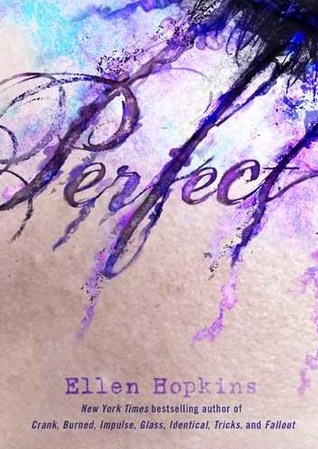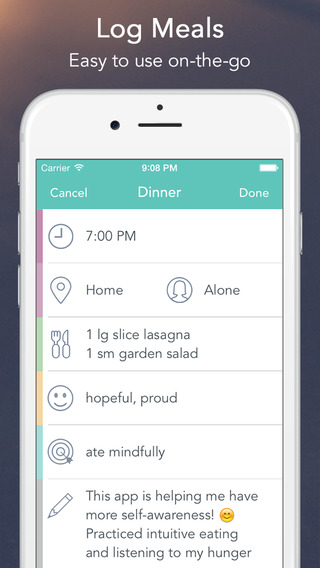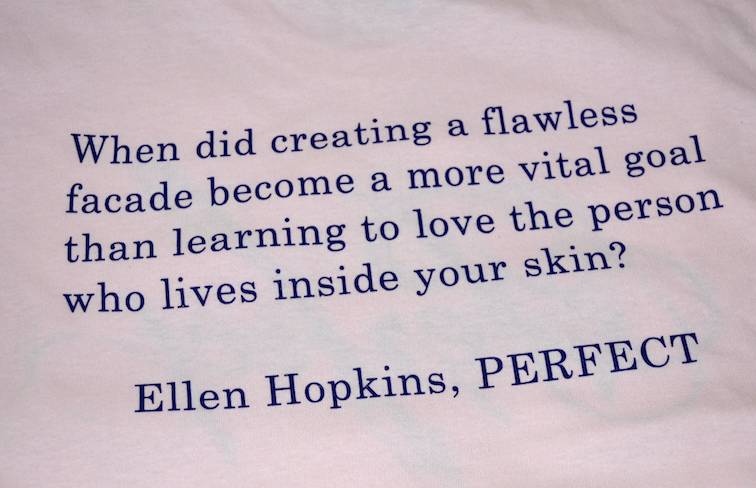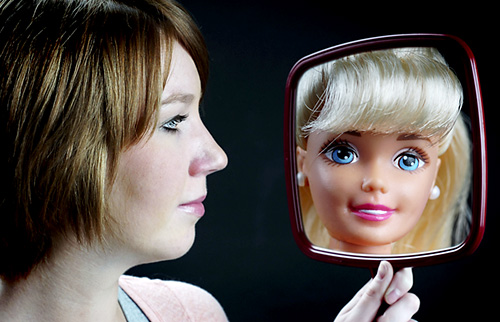Eating disorders plague teenagers
August 16, 2015
To fit in. To fit into a size 0. To fit in on the beach. To feel as though one’s worth is defined by a number on a scale. Many teenagers struggle with a distorted perception of their bodies that they believe does not meet an idealized image of perfection. In certain cases, teens dangerously pursue this unattainable goal through starvation, dehydration or induced vomiting. With the help of friends, family and trained professionals, teens with eating disorders can maintain a realistic body image and healthy eating habits.
A common misconception amongst those who wish to lose weight is that a healthy diet consists of eating less and eliminating particular foods, however a true meal plan requires rational balance.
Julie Dorfman, nutritionist and dietician specializing in eating disorders, believes balance and variety are the cornerstones to a healthy diet.
“I am a big believer in that there is no such thing as a good or bad food, but everything should be balanced,” said Dorfman. “A lot of teens consume basic meals which only hit one or two food groups and will miss the nutritional value of fruits and vegetables in every meal.”
The first step to achieving a healthy diet is to have healthy food readily available.
“You can’t eat healthily if there is nothing healthy in the house,” said Dorfman.
When working with her clients, Dorfman starts her course of action for those with an eating disorder by requiring all patients to be on a meal plan.
“It’s easy to keep a healthy diet when your balanced meals for the week are planned in advance,” said Dorfman.
Dorfman’s control over the specific amount of calories and fat her patients intake allows her to help them gain or maintain a specific weight.
However, many of her patients face more difficulties and obstacles on the road to recovery.
“A lot of patients have a fear of food forming out of an anxiety of weight gain,” said Dorfman. “I work directly with the patient, constantly challenging them to eat things, slowly reintroducing them to certain meals. All the while, I make sure their weight is maintained through balanced meals. This shows them that they do not have to fear eating.”
Eating disorders pose a significant threat to overall health and should be taken seriously.
According to the National Association of Anorexia Nervosa and Associated Disorders, “over one-half of teenage girls and nearly one-third of teenage boys use unhealthy weight control behaviors such as skipping meals, fasting, smoking cigarettes, vomiting and taking laxatives.”
People should be aware of the signs that indicate a friend or family member is struggling with an eating disorder. For example, noticing what someone is eating or not eating during meal times may reveal a problem. A common symptom of an eating disorder is that the person cuts his or her food into little pieces to make it appear as if they have eaten. In addition, personality changes around food, cancellations of plans, or excuses not to eat socially are key warning signs.
The process of recovering from a period of severely restricting foods is a stressful, difficult time for those dealing with an eating disorder. With the help of a nutritionist and a balanced meal plan, however, recovery is a more attainable possibility.
Rise Up + Recover offers technological innovations in eating disorder recovery
As an eating disorder patient progresses along his or her path of recovery, he or she must utilize a large assortment of resources. Some of these tools include a daily check-in to evaluate their emotions, a food log to keep track of their meal plans, and a list of possible coping skills to resist any sudden urges. One useful app specifically designed for eating disorder patients, ‘Rise Up + Recover’ combines each of these resources, along with many other motivating factors.
Created by former eating disorder victim Jessica Raymond, the app works hand in hand with the Recovery Warriors website. The combined program reaches out to over 101 countries around the world, with a mission of “connecting treatment, technology and innovative design to eating disorder recovery.” Following the four principles of commitment, connection, courage and compassion, the program seeks to uncover the warrior within everyone.
The app itself contains four main categories, starting with the daily check-in form. The app asks the user to rate his or her emotions, list his or her actions (both beneficial and detrimental to his or her health), and evaluate drug usage. The user also has the option to export a series of his or her daily check-ins to a PDF for further organization.
Following the daily check-in, meal logs allow the user to track his or her daily meals and snacks. Unlike other meal plan apps, Rise Up + Recover does not track calories, a triggering part of most food-centered apps. For each meal, the user has the option of noting the time and place of the meal, with whom they ate it, their emotions throughout, and any urges or actions. Meal logs can also be exported to a PDF.
The most helpful parts of the app lie within the coping skills category. These suggestions allow the patient to resist urges through various techniques. Divided into five sections consisting of 911 Distress, Body Image, Journaling Prompts, Mindfulness, and Relationships, each coping skills category offers options for coping with urges. Journaling Prompts, for example, allows users to delve deeper into their disorder through written expression, while Body Image encourages exercises such as listing ten beautiful things about the world. The large assortment of coping skills offers solutions for patients of all levels of care.
The final tab of the app refers the user to various sections of the Recovery Warrior website. The website itself contains articles addressing topics from various stages of eating disorders, contacts for nearby help centers, and inspirational quotes. Differing from other eating disorder recovery programs, it also contains artistic methods of coping. Podcasts of yoga and meditation exercises provide structured activity while promoting self-love. Partnering with Spotify, Recovery Warrior currently offers five playlists covering different themes, such as “Warrior” and “Freedom”.
Despite necessary updates to the relatively basic appearance, Rise Up + Recover remains one of the only apps specifically structured for those battling an eating disorder. Each page contains an inspirational quote that matches the bright, eccentric personality of the program as a whole. As Recovery Warrior continues to grow, patients from all over the world will experience a new innovation in eating disorder recovery.
Perfect reveals the unrealistic expectations of perfection
What does it mean to be perfect? A seven-letter word. A word begrudgingly specific in its definition, yet subjective in its visual. Is it an attainable goal or is it simply an illusion, a façade that can never be reached?
Ellen Hopkins tackles the elusive subject in her novel, Perfect. Written entirely in a poetic voice, Perfect is a heart-felt tale that relays the lives of four high school seniors. Perfection is a word completely ironic in its nature, unattainable yet by definition the only thing worthy of being attained. Therefore, it is only fitting that the four main characters are polar opposites of the novels title.

Each protagonist is assigned a defining adjective: “Perfect” Cara, “Pretty” Kendra, “Buff” Sean and “Bomb” Andre. A unique font matching each character’s personality adds a further distinguishing point. The fact that the characters are originally represented by only one identifying label speaks volumes. As the book progresses it becomes apparent that external forces have forced these labels upon the four teenagers. Through using these defining adjectives to “separate” each character, Hopkins says something even more cutting: external forces drive one’s definition of perfection.
One particularly intriguing story is that of Kendra. Kendra is seemingly perfect in every way due to her undeniable “beauty”. Despite her prized five foot ten inch frame, Kendra still feels a desire to alter herself. An aspiring model, Kendra endlessly strives to alter her figure from a size four to a size two. Each page of Kendra’s story reveals darker and darker secrets. It becomes quickly apparent that Kendra struggles with major body image issues.
By page 50 of the 500 page novel, there is no denying that Kendra has full-blown anorexia.
The biggest perpetrator of Kendra’s anorexia is in fact her mother. Hopkins clearly displays that without a strong home support system adolescents cannot succeed. Kendra’s mother ignores Kendra’s anorexia in hopes that her daughter will become a successful model. Later in the novel, Kendra even falls off a bicycle while trying to work off the calories from eating three jolly ranchers. Still, Kendra’s mom refuses to recognize her daughter’s anorexia. Kendra, in constant denial of her eating disorder, firmly states that she is “okay,” though she is far from it.
Hopkins teaches an important lesson through the character of Kendra— anorexia is a disorder that quickly worsens. As the novel progresses Kendra is not only obsessed with restricting but feels the need to undergo rhinoplasty, or plastic surgery of the nose. Eating disorders often target the cognitive process, making victims feel as if there is always another weight or bodily appearance that can achieve “perfection”.
Merriam-Webster defines perfection as the quality or state of being perfect as freedom from fault or defect. Through tragic stories of troubled teens, Hopkins recognizes the fact that “perfection” itself is not a realistic or attainable concept.
Celebrities affect people’s body image
What constitutes as the “perfect” body? Is a perfect body pictured as skinny or as proportional? Does this image include long legs or short legs? Are big features considered perfection or are small features more appealing to the eyes?
There are no correct answers to these questions.
Perception of the physical human body alters depending on the opinion of the beholder. Beauty, perfection and ugliness, in reality, are all abstract concepts when pertaining the to the human body. They vary and change and are labeled through someone else’s opinion.
Today, the media is a huge contributor when it comes to shaping many people’s, especially teens’, opinions on the concept of the “perfect” body. With TV, online magazines, and various forms of social media, people are constantly exposed to the lifestyles of celebrities and other prominent names on the internet and television.
According to the National Association of Anorexia Nervosa and Associated Disorders, 69 percent of girls in grades 5-12 reported that magazine pictures influenced their idea of a perfect body shape.
The “ideal” body portrayed in the media is far from average. West Virginia Department of Education notes that the average US woman is 5’4” tall weighing 140 pounds; the average US model is 5’11” weighing 117 pounds.
Advertisements primarily consist of the average model and rarely show the average woman; as a result, a model-like figure seems more admired and appreciated by the masses. From this, naturally, women strive to be that desired figure.
In one study produced by Rader Programs, 3 out of 4 women stated that they were overweight, although only 1 out of 4 actually were. In addition, while only 1 out of 10 high school girls are overweight, 9 out of 10 high school juniors and seniors diet.
How people, especially women, perceive themselves usually comes from comparing themselves with other women. Eighty percent of women who answered a People magazine survey responded that images of women on television and in the movies make them feel insecure.
The media will always imprint a certain idea of body image on a person’s mind. The fashion, music and food industries are ever changing. The image of the “perfect” body will change with the progression of time, and the constant need to fit that desired image will continue.



